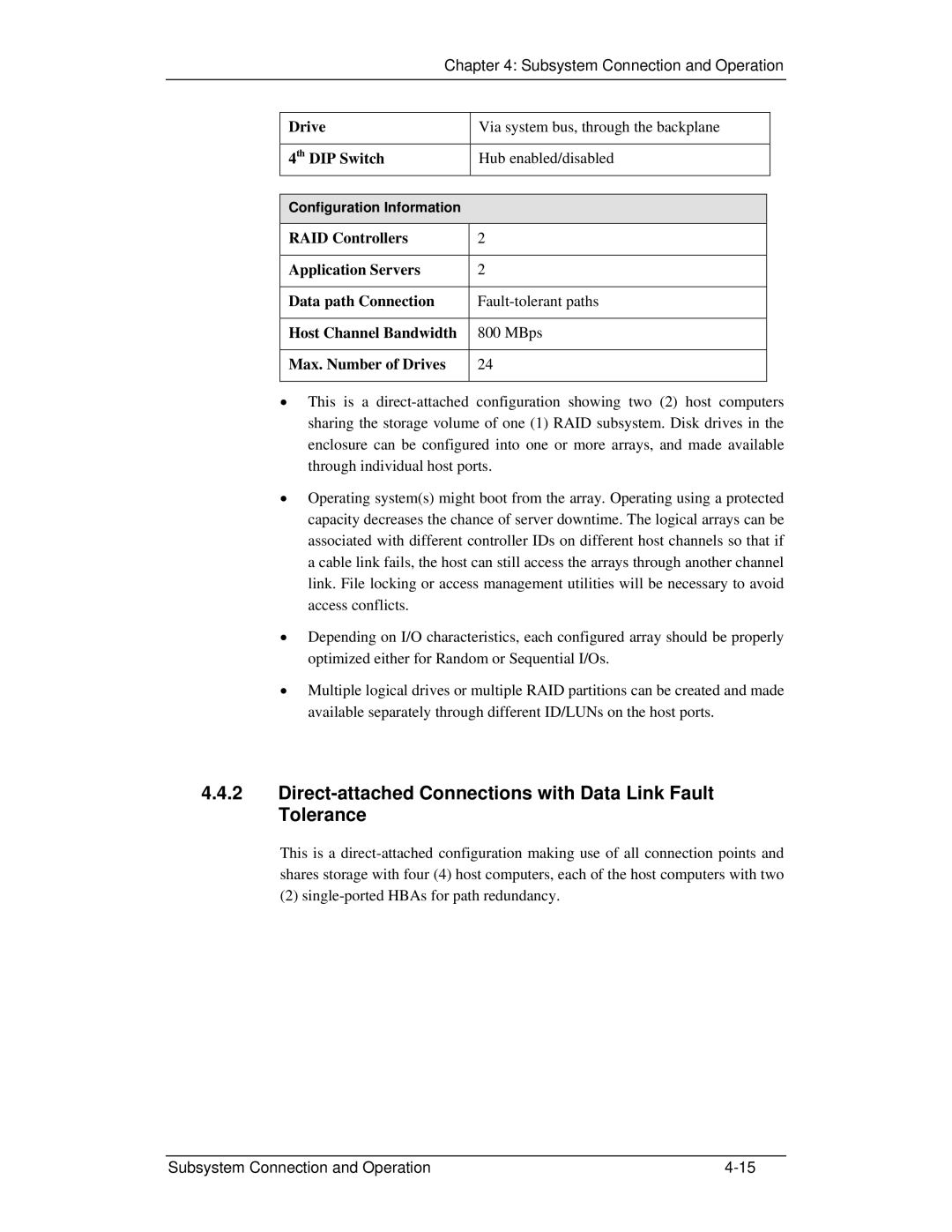| Chapter 4: Subsystem Connection and Operation | |||
|
|
|
|
|
|
|
|
|
|
| Drive | Via system bus, through the backplane |
| |
|
|
|
|
|
| 4th DIP Switch | Hub enabled/disabled |
| |
|
|
|
|
|
|
|
|
|
|
| Configuration Information |
|
|
|
|
|
|
|
|
| RAID Controllers | 2 |
|
|
|
|
|
|
|
| Application Servers | 2 |
|
|
|
|
|
| |
| Data path Connection |
| ||
|
|
|
| |
| Host Channel Bandwidth | 800 MBps |
| |
|
|
|
|
|
| Max. Number of Drives | 24 |
|
|
|
|
|
|
|
•This is a
•Operating system(s) might boot from the array. Operating using a protected capacity decreases the chance of server downtime. The logical arrays can be associated with different controller IDs on different host channels so that if a cable link fails, the host can still access the arrays through another channel link. File locking or access management utilities will be necessary to avoid access conflicts.
•Depending on I/O characteristics, each configured array should be properly optimized either for Random or Sequential I/Os.
•Multiple logical drives or multiple RAID partitions can be created and made available separately through different ID/LUNs on the host ports.
4.4.2Direct-attached Connections with Data Link Fault Tolerance
This is a
(2)
Subsystem Connection and Operation |
